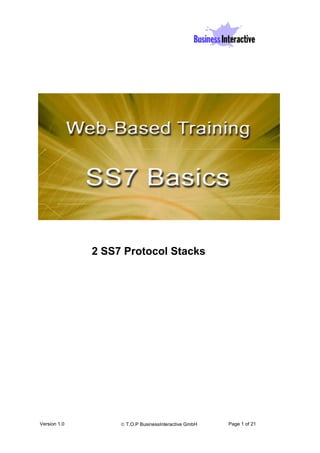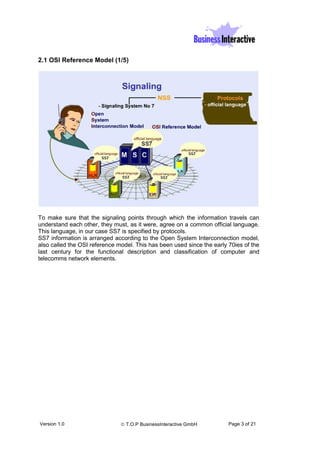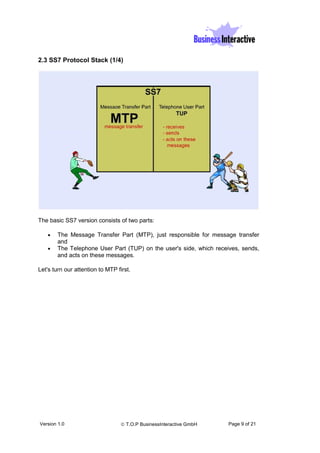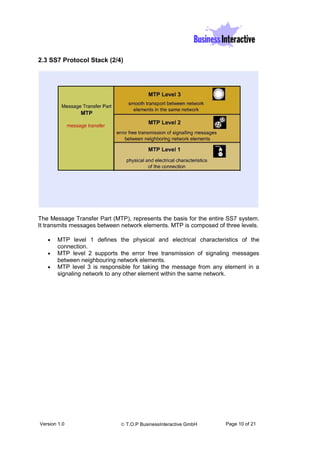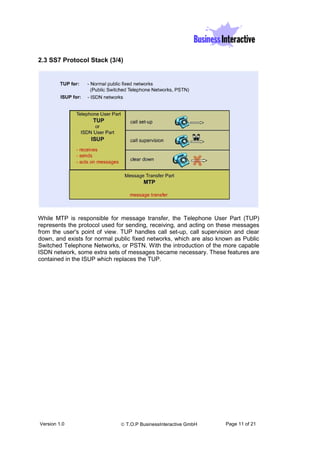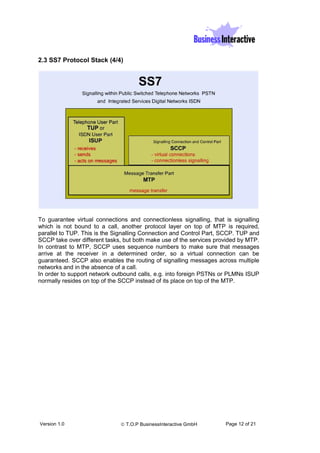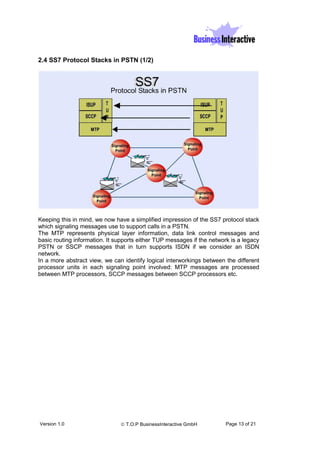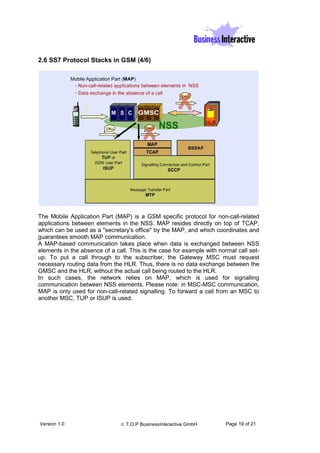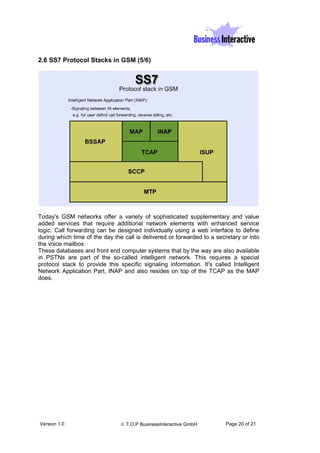This document discusses SS7 protocol stacks. It begins by explaining the OSI reference model, which defines 7 layers of protocols used in computer networks. It then describes the basic SS7 protocol stack, including the Message Transfer Part (MTP) and Telephone User Part (TUP). The MTP handles message transfer across 3 levels, while the TUP sends, receives, and acts on messages. For ISDN networks, the ISUP replaces the TUP. The document also discusses the SS7 protocol stacks used in public switched telephone networks (PSTNs) and how messages are processed between different units at each signaling point.
